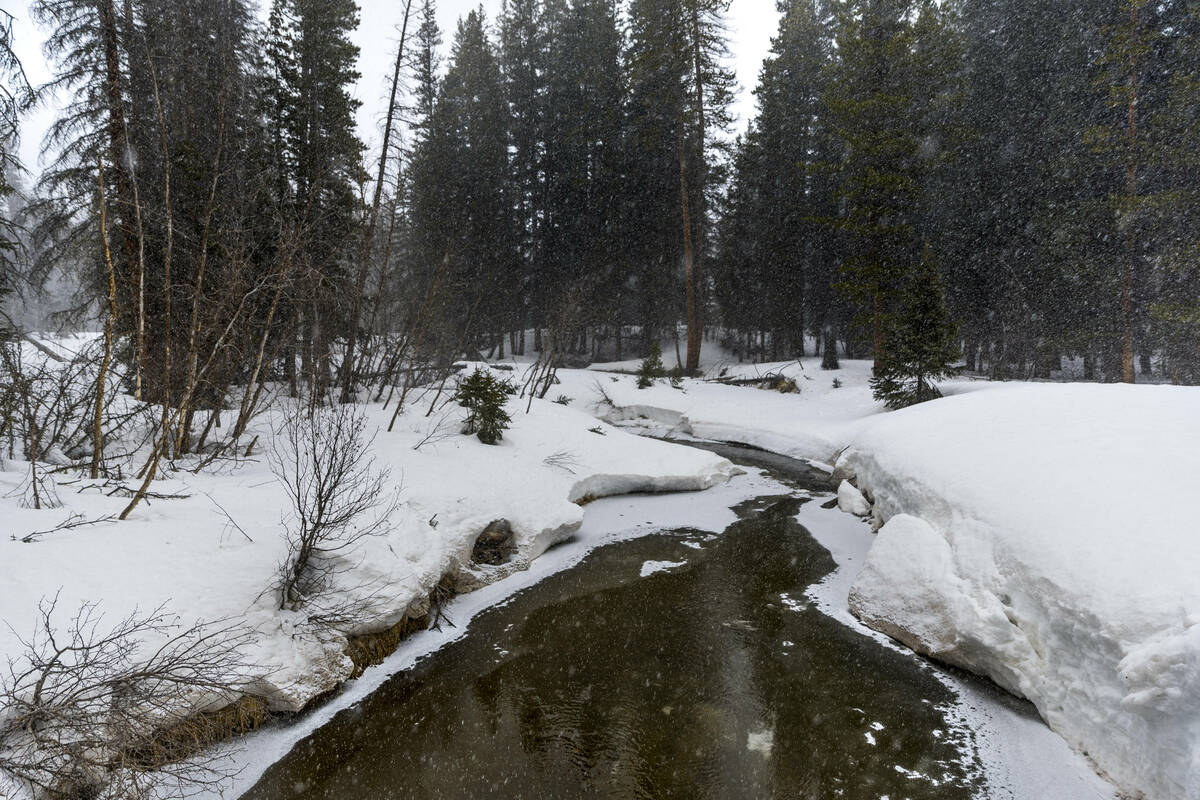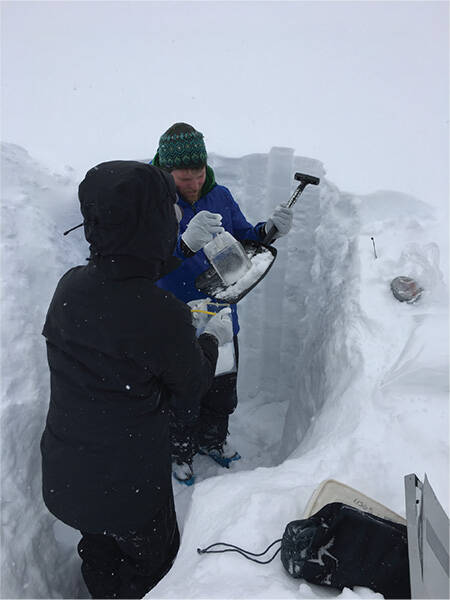Toxic metals found in snowpack of Rocky Mountains, study shows
The West’s snowpack isn’t just dwindling — mining waste has polluted it, too, a new study has found.
Filling a gap in federal monitoring, researchers analyzed snow samples from 48 sites in 2018 and found concentrations of compounds such as mercury, zinc, cadmium and antimony. High levels of exposure to these chemicals, according to the Environmental Protection Agency, can spur a wide suite of health impacts, including respiratory issues, kidney failure and, in the case of cadmium, cancer.
Snowpack in the Rocky Mountains is directly tied to Southern Nevada’s water supply. When the snow melts, much of it travels to Lake Powell, and the federal government dictates how much is released downstream into Lake Mead, the reservoir from which the Las Vegas area sources about 90 percent of its water.
“The good news is that the concentrations we found were very low,” said Monica Arienzo, a hydrologist at the Desert Research Institute and lead author of the study. “We still recommend that we continue to monitor for these metals, because we attribute it not only to the history of mining in the area, but current mining.”
Below federal standards
Much of the chemicals can be attributed to defunct mining operations in the Rockies, including several sites under the EPA’s Superfund program — the federal initiative to clean up hazardous waste.
Arienzo and her team of researchers from the U.S. Geological Survey, the University of Nevada, Reno, and Portland State University were able to identify where the dust particles came from. Namely those were mines in the Pacific Northwest, Idaho and Montana.
What they initially thought was an error in the data, they corrected using a formula where researchers could say with more precision how much of the contamination is either naturally occurring or human-caused. Arienzo soon found herself on a deep dive about the history of antimony mining.
It came into focus quickly: Antimony is used for batteries and is of great importance to the military, for use in products ranging from night vision goggles to nuclear weapons.
“What we found was, when we did that correction, cadmium, mercury, antimony and zinc all showed this trend of more human impacts, or human sources, of that metal in the northern Rockies,” Arienzo said.
More oversight needed
While the study is no cause for immediate alarm, the authors are calling for more research and oversight of sites with contaminants that could one day end up in the Colorado River’s water supply in larger concentrations.
“Strategies to limit the emissions of these metals to the Northern Rockies could benefit from focusing on remediation of contaminated sites, and continued monitoring and mitigation of active mining and smelting in the region,” the authors concluded.
Nathan Chellman, a Desert Research Institute snow and ice hydrologist who wasn’t involved in the study, said the findings are a promising advancement in the understanding of how mining pollution may affect snowpack.
Further investigation of whether these concentrations are present over longer periods of time could paint an even better picture, he said. Chellman wonders if chemicals from mines in other states like Colorado could show up with different storm patterns.
“Are those mines treated differently, or if they’ve been remediated differently, why don’t they show up?” Chellman said. “And are there lessons to be learned from how those mines are being regulated or run that could pertain to the northernmost ones?”
Contact Alan Halaly at ahalaly@reviewjournal.com. Follow @AlanHalaly on X.



















